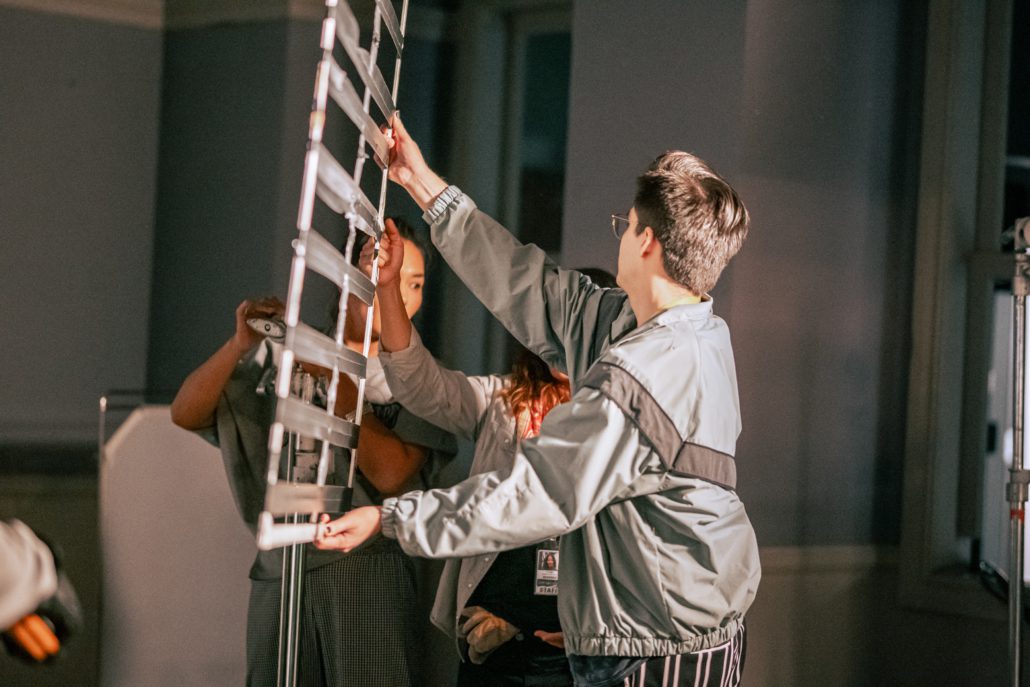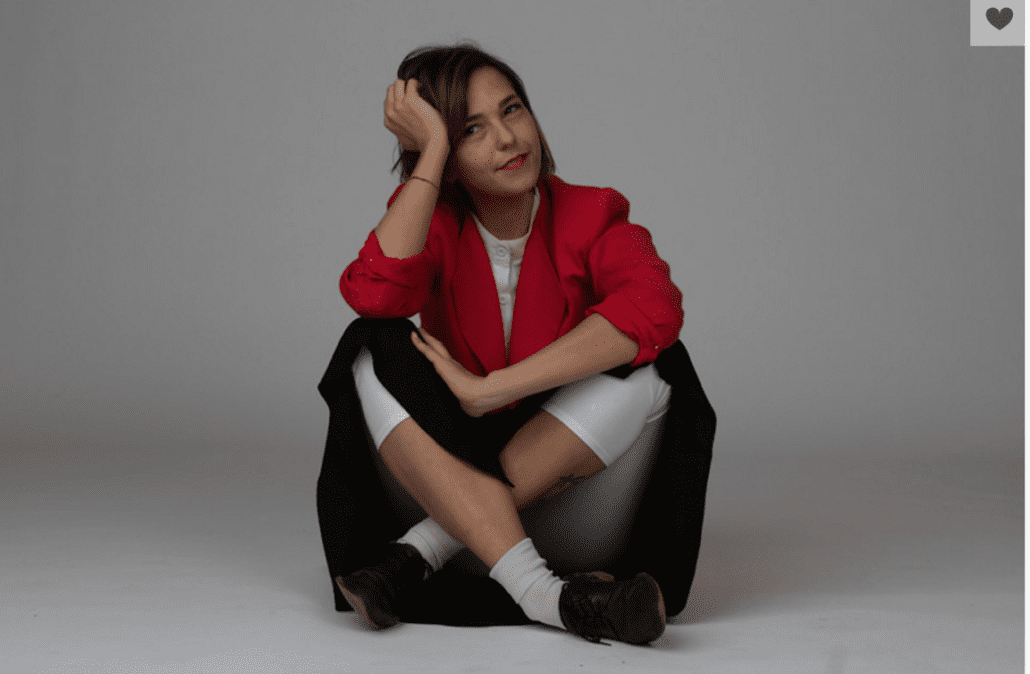Everything You Want to Know About Production Design

From location scouts to set decorating, this is production design.
The best films are the ones that tell a story with dialogue and onscreen action as well as with a cohesive visual narrative. Film sets, locations, graphics, props, costumes, all play a part in crafting a real-world narrative for the filmgoer to enjoy. Production designers (PDs) are major contributors to a film’s narrative. They are responsible for creating a space to help expand the story by setting the scene’s look and feel. From the most minor detail to the overarching style of the film, production designers have a hand in creating a space in every movie.
What Does a Production Designer Do?
The role of the production designer can be summed up as the creative arm of the film director. It’s the production designer’s job to interpret and create a director’s vision for the script. The involvement of the production designer starts when they read the script with the director and sketch ideas for the style and location. They then meet with the director and discuss the best way to shoot the film. Once a direction has been established, a production designer will help establish and manage the art department that will help implement the vision. This includes hiring everything from set designers, art directors, illustrators, graphic artists, to set decorators, propmasters, and scouting locations with the locations manager.
Production designers bring teams of people together to create a unified vision. In addition to visualizing and creating the design of the production, they’re also responsible for maintaining the production schedule and staying within the budget. From pre-production, through at least principal photography, production designers are on hand. They also work closely with the producers and cinematographers. PDs wear many hats and like most jobs on a film set, it’s fast-paced with irregular hours.
Interview with Production Designer, Katie Byron.
To give you a better idea of what a career in production design work looks like, we interviewed L.A. Film School alum, Katie Byron. Katie has worked as a production designer on movies including, BookSmart directed by Olivia Wilde, and the A24 movie, Zola. Here is our interview with Katie Byron:

How did you become a production designer?
I’ve always been enamored and enchanted by the concept of space. How it changes, how it becomes ordinary, and how can be extraordinary through our perception of it. So, I studied architecture and art history at UC Berkeley. I loved to stare at and draft buildings on our college campus so much that a respected colleague told me I should just enroll in the studio art program. So I took a painting course on the campus and was in love with the long hours spent in the studio with others and the critiques. After school was up, I felt the loneliness of working with art in San Francisco. I had more fun working at restaurants than making art. It was infinitely more fulfilling to me. I loved clearing dirty plates from tables and making sure an entire dining room was happy and satiated.
I was in denial that filmmaking even existed, but I think it hung there in the background the entire time. I was going through a rough early 20s period of my life and thought it would be really wonderful to see my dad as an educator. I enrolled in the L.A. Film School as a cinematography/sound double major. I moved down to LA to pursue this while working at a restaurant on the weekends. I did as much of the education as I could afford but learned some key things there. Nesdon Booth, the art direction teacher at L.A. Film School, gave an entire class on “the bedside table” and how it reveals character, and I was hooked. I was obsessed with the woodshop. I volunteered to do any design projects even though it was outside of my official focus. But hands down the most important thing was meeting a group of women I continue to work with to this day. As we were building a cabin set for Alana Morshead (now an amazing costume designer) our art director Alexi Gomez said she didn’t want to go home until the set was finished. We stayed late hand painting the 1×6 boards that lined the roof. We were lost in the process and it was such a joyous experience to come in the next day and see the entire crew shocked at what we could accomplish. Alexi and I have built houses many times since!
At what point does a production designer get involved with a film production?
Because production designers are so involved with locations, I usually start when the location scout or manager starts. This is usually around 7-10 weeks out. Some long-term collaborators pull me even earlier, since involving a PD when the script is being written can help build the world and budget around it.
What does your day-to-day look like on a production?
Oh man, this is the craziest thing about the production design career. It is ALWAYS different. There is absolutely no routine. Every time we make a movie or show, we basically build a company from scratch and then dissolve it four months later. It’s always different. Locations scouting, drawing, researching, building teams, negotiating, budgeting, list-making, molding, decision making!
What is your shopping process like? For instance, do you work with the art department to go to prop houses?
I just finished a show in Sydney, Australia, where they don’t have prop houses. We had four buyers/dressers out scavenging thrift stores, Facebook marketplace, flea markets, etc for items.
They would post their findings on SLACK (our platform for working remotely) and I would give feedback. In LA, I work with a decorator (usually L.A. Film school alum Rachael Ferrara). She has buyers who shop and post their findings in Dropbox or Google drive. Rachael and I work together to sort out the best options and then present boards of our ideas to the director.
What made you want to work in film? Did your parents have an influence on you growing up?
I had no interest in working in films when I was growing up. I actually didn’t really care too much about watching them either. My mom had a strict consumption cap with television and we rarely went to movies. Instead, I spent a lot of time keeping myself occupied with all kinds of hobbies and staring into space and developing an inner dialog. My parents were great nurturers of whatever new interest I had. They also were great at following their passions no matter how fleeting or short-lived. I think watching them lose themselves in craft led me down my own unique path that was also very craft-driven.
What do you enjoy the most about production design? Any favorite projects?
I always say this but it’s very true to me. The collaborative nature of the job is unmatched. Every show provides a new family and the experience takes on the guise of an epic adventure. There are fights, battles, laughs and always at the end you have a greater awareness of who you are. The artform to me is the making of the work. It’s great to have a token at the end of the process to share with the world and you always hope it lands, but the true art is in the creation. I think that is why the industry can also feel abusive. It sucks you in completely and you can find yourself working in an unsafe way, losing track of the fact that you are just making make-believe. I try to bring a lot of awareness to this duality as I work. You have to pump the process full of compassion and good people. So that the container is a safe place to do a trust fall. That is my ideal place to create.
Tell us about your creative process.
This one is always different as well. It depends on the story and the director. Not to sound too “woo woo” but my goal is always to connect to the brain at the heart of the project and try to imagine what might be most supportive to the entire process. This takes many forms. It could mean that I become a quiet, tip-toeing facilitator or an emboldened decision-maker. I meditate frequently to try to figure out exactly how to approach the process.
What’s next for you in the production design world?
I have a few films cued up but I’d like to remain a bit quiet about them.
Rapid-Fire Production Design Advice
Do you have any advice for your past self? Let’s say 20-year-old Katie Byron.
Oh, this is a sweet question. I’d tell her I miss her and that she should write down her thoughts on everything because I’d love to read her journals and be transported back in time and see things through her eyes again.
Does it help to be naturally crafty to become a production designer?
Yes! It definitely does help to be crafty. In both definitions of the word “crafty.” I think you mean hands-on creativity. I’d say yes because it’s the way I can lose myself in the creative process. When I start tinkering and problem solving, I enter the flow state that is so conducive. I feel lighter and free of anxiety. But the other definition of “crafty” also matters. It helps to think outside the box and get clever.
Do you have tips for students who are building their portfolios?
I usually hire crew members through recommendations from colleagues. Most people get jobs this way. Which is unfortunate because it can be hard to break in. When you build your portfolio or website, try to show your process. That can reveal how you work and who you are as a person. Like maybe start with the sketch or references and then the finished product. Describe how you pulled it off and with what resources. I think showing how you create is just as much a part of the selling of your work as the finished product is. You may be up against people that have recommendations, so in your portfolio, you’ll want to reveal as much about yourself (in a professional way) as you can. Stay authentic.
Check out Katie Byron’s professional portfolio and website.
Of course with all of those responsibilities as a PD, it’s not a job you can just leap into without experience. It takes years of work honing and perfecting the many skills required for the role. A straightforward way to get some of that experience is by obtaining a relevant degree in a field related to art or design. As a production designer, you’ll need more than just good ideas, you’ll need to know how they’ll be produced. As a student, pursue a degree that will allow you to develop skills like sketching, creating diagrams, drafting as well as refine your eye for design. Most importantly, as you’re gaining experience, be sure to build a diverse portfolio of your work. Because before you even get in the door you’ll need a good portfolio that shows off your skills to pitch for movies.
